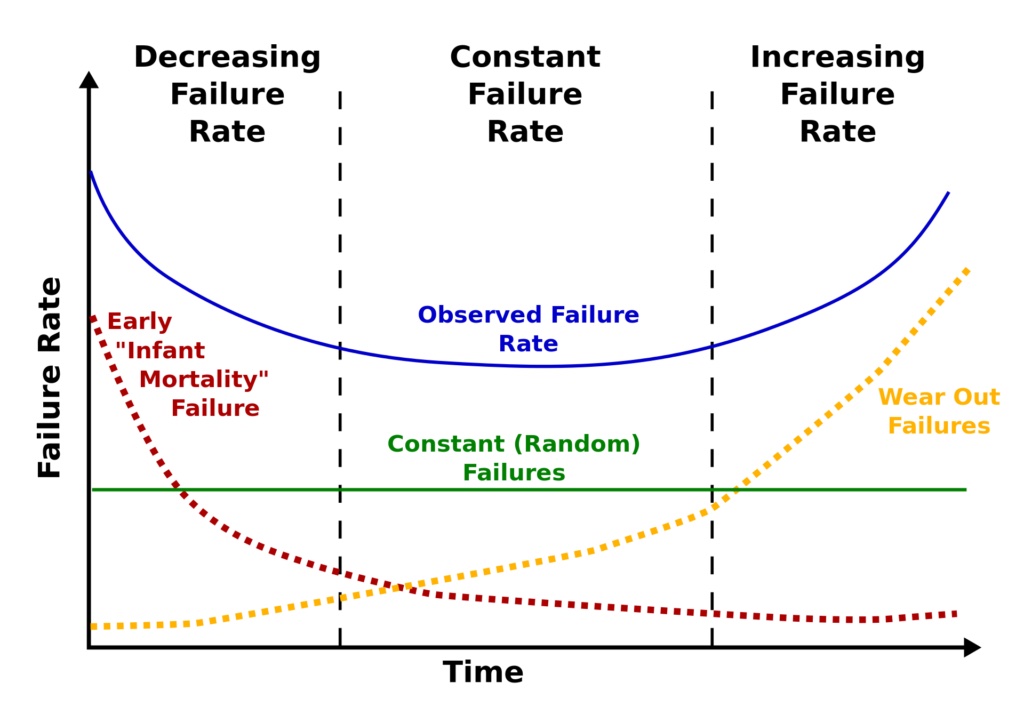The concept of the “bathtub curve” has held a common place in the vernacular when describing a product, usually hardware, and its lifetime in the market. As new technologies and manufacturing practices become more widely adopted across the industry, however, we’re seeing that curve start to shift. Let’s dip into the concept of the changing bathtub curve, and what that means for buyers, both in the enterprise and as consumers.

As you can see above, the bathtub curve incorporates multiple potential failure rates into one smooth line visualizing the probability of failure over a product’s lifetime. The “bathtub” monniker comes from the initial and final “wall” spikes of failure. The first of these comes from the macabre “infant mortality” failures that can happen with any new product that unexpectedly goes kaputz. Then, later in that product’s life come wear out failures, because like anything in this world, hardware has an inevitable lifespan and doesn’t last forever.
Times have changed drastically, however, since the initial uses of the bathtub curve. We live in a day and age where manufacturing processes are so precise that we need to use multiple decimal places to track the most minute of changes in size, weight, speed, etc. As these processes become more controlled and engineered, and subsequently, quality controlled from the get go, less products are met with initial failure.
Drive Failure Over Time: The Bathtub Curve Is Leaking
This trend can be especially noted in the hard drive industry. On the subject, Andy Klein at Backblaze comments:
From time to time, we will reference the “bathtub curve” when talking about hard drive and SSD failure rates. This normally includes a reference or link back to a post we did in 2013 which discusses the topic. It’s time for an update. Not because the bathtub curve itself has changed, but because we have nearly seven times the number of drives and eight more years of data than we did in 2013.
He goes on to describe how, thanks to increases in failure rate data, improvements to manufacturing processes, and rigorous pre-testing practices, we’ve actually seen a sharp decrease in initial failure rates of disk drives. As a result, the bathtub curve of yore is slowly turning to something more akin to a hockey stick.
If you would like to learn what that hockey stick means for storage drives, please read more of Drive Failure Over Time: The Bathtub Curve Is Leaking by Andy Klein at Backblaze.




